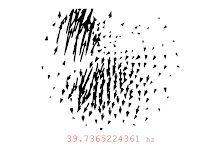Thursday, 28 May 2009
OUGD 103 evaluation
Speaking from experience



Tuesday, 19 May 2009
Icff visuals
SCALA 070309 from ICFF VS FAC on Vimeo.
ICFF VS FAC REEL 2008 from ICFF VS FAC on Vimeo.
This video's were produced by ICFF I am possibly very interested in taking this approach to my future work using my illustration to make it more than a print on stock. Watching these ideas has also given me a few ideas for my presentation, i wont be able to create something as interesting as this due to the powerpoint restrictions but feel that something better than standard text and image could be done.
SFE research














 This book Vormator is something i have been looking at recently, the work is produced using a set of specific shapes that were give with the brief. Each designer put's there own take on the shapes and creates a image. I like how structured the brief was and yet many different images were created.
This book Vormator is something i have been looking at recently, the work is produced using a set of specific shapes that were give with the brief. Each designer put's there own take on the shapes and creates a image. I like how structured the brief was and yet many different images were created. Wednesday, 13 May 2009
SFE;Research







 Wayne horseman works on a large scale, uses black and white lots and i am very inspired by seeing how his work progress's from sketchbook to wall, canvas etc. I feel this work is not that appropriate to my SFE Brief but just wanted to look at what people are doing on a large scale, as my initial idea was to create a wall graphic to impress the new students and give them something to chat about. I like the way he has his own approach to work.
Wayne horseman works on a large scale, uses black and white lots and i am very inspired by seeing how his work progress's from sketchbook to wall, canvas etc. I feel this work is not that appropriate to my SFE Brief but just wanted to look at what people are doing on a large scale, as my initial idea was to create a wall graphic to impress the new students and give them something to chat about. I like the way he has his own approach to work.
Sunday, 10 May 2009
5 pieces of design;PPD
Friday, 8 May 2009
Fox hotel
SFE:Research
SFE:Research




"List
1. Ideas
2. Thoughts
3. Rambling
4. Experiments
This is my way of expressing my mind through graphic design. Hopefully one of my thoughts, ramblings and ideas will influence someone to be creative and carry out and experiment and achieve what I haven't done yet or possibly it will leave them with some interesting thoughts.
My work includes over 80 different designs expressing my thoughts, ideas and mini experiments I want to try out."
Think i probably showed you some off this chaps work before. i met him at a party, he was cool, turned out to be super cool and know every the definition of cool (nice fixed geared:p).
This particular piece of work have inspired me to create some interactive for the new students that will spark conversation rather than creativity like this this one does.
I felt that my origianl ideas was something that had already been done and something that didnt need changing, maps are already clear and have a purpose, i didnt want to change this purpose.
Speaking from experience 2
many of the first year's may not investigate/explore the city they are studying in and there for have the problem of not knowing where specific things are that may be useful to them and in turn make them settle in to there new course quicker.
























